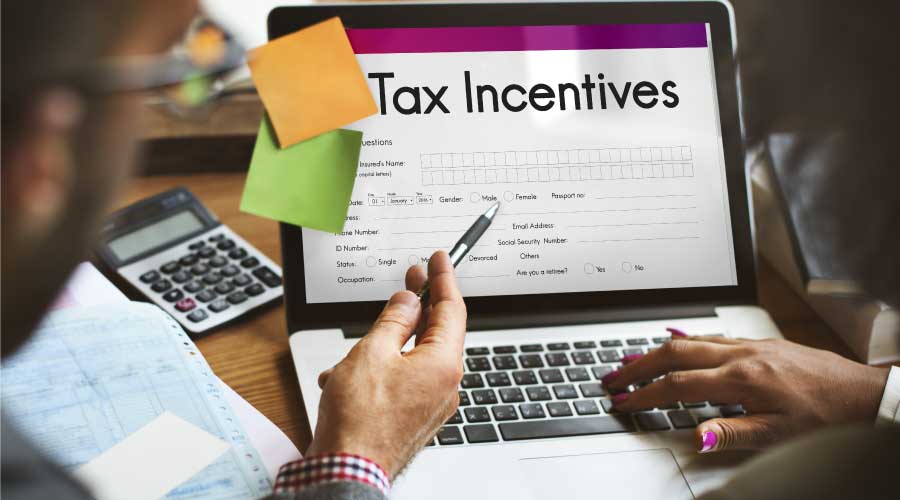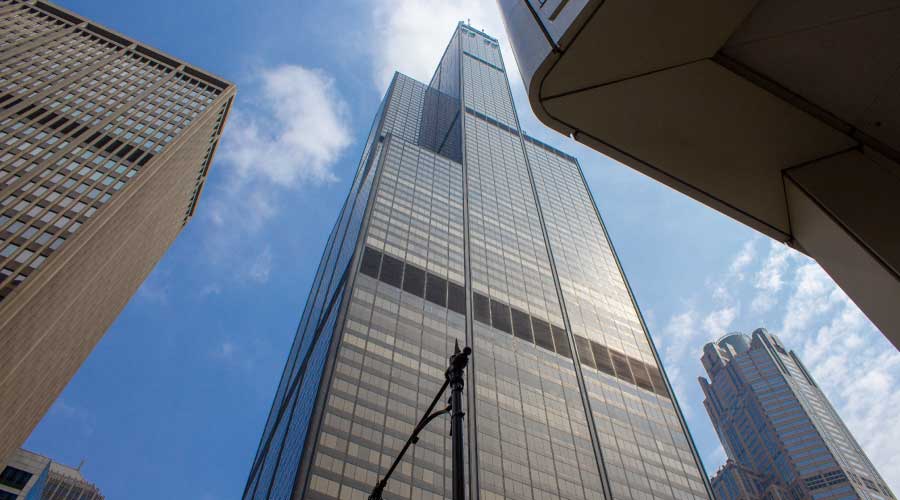Available Grants, Tax Incentives for Commercial Buildings
Federal government offering owners various ways to encourage building design.
By Naren Deshpande, Contributing Writer
Building design has long been a crucial aspect of our cities and towns and commercial facilities, with the potential to play a significant role in reducing carbon emissions and energy use. To encourage more sustainable building practices, the federal government has introduced various grants and tax incentives for building design.
Federal grants
The federal government offers a variety of grants to help facilities with the cost of commercial building design. These grants can be used for a variety of purposes, including the development of new buildings, the renovation of existing buildings, and the expansion of existing buildings.
To be eligible for a federal grant for commercial building design, businesses must meet certain eligibility requirements. These requirements vary depending on the specific grant program. In general, businesses must be located in the United States, be for-profit, and be in good financial standing.
The application process for federal grants for commercial building design can be complex. Businesses should contact the grant administrator for the specific program they are interested in to learn more about the requirements and application process.
The Department of Energy provides a range of grant opportunities for innovative and energy-efficient building design, including the Building Technologies Office, which supports research and development of next-generation building technologies. Similarly, the Environmental Protection Agency offers the Energy Star program, which provides rebates and incentives for businesses that implement energy-efficient building practices.
Tax incentives
The federal government also offers a variety of tax incentives to businesses that invest in commercial building design. These incentives can reduce the amount of taxes that businesses owe, which can help them to save money on their taxes. In August 2022, President Biden signed the Inflation Reduction Act of 2022, H.R. 5376. Two existing energy efficiency tax incentives, Energy Efficient Tax Credits and 179D Energy Efficient Commercial Buildings, were either expanded or extended.
179D: The 179D tax deduction, also known as the Energy Policy Act (EPAct) deduction, is a federal tax incentive designed to encourage energy efficient systems in commercial buildings. Section 179D was first included in the tax code of the EPAct of 2005 with the goal of providing a tax incentive for energy-efficient systems placed within public institutions undergoing new construction and renovations of facilities.
Under this deduction, building owners or designers can claim a deduction of up to $5 per square foot of the building's energy efficient systems, provided they meet certain requirements. These systems include lighting, HVAC and hot water systems, building envelope and insulation, and more. The deduction can be claimed for newly constructed or renovated commercial buildings that meet certain energy efficiency standards.
To be eligible for the 179D deduction, building owners must meet certain requirements, including:
- The building must be located in the United States.
- The building must meet certain energy efficiency standards.
- The IRA provides higher 179D deductions for meeting higher prevailing wage and apprenticeship requirements. If these thresholds are met, and the building achieves a 25 percent reduction in energy and power costs, the deduction is $2.50 per square foot. If energy and power costs are reduced further, the deduction increases by $0.10 for each additional percentage of reduction up to $5 per sq. ft.
- If the prevailing wage and apprenticeship requirements are not met, the 179D Deduction is $0.50 per sq. ft. for a 25 percent reduction. Further reductions increase the deduction by $0.02 per sq. ft., up to $1 per sq. ft.
- To claim the deduction, a third-party certification must be provided to verify installation and performance.
Section 48 Investment Tax credit: Section 48 Investment Tax Credit (ITC) is a federal tax incentive that encourages investment in renewable energy projects by providing a tax credit. This tax credit helps to offset the costs associated with installing renewable energy systems such as solar, wind, geothermal, hydropower, and fuel cell technologies. Under Section 48 ITC, businesses can claim a credit up to 50 percent of the project's total cost, provided they meet certain requirements. This can be a significant tax incentive for businesses looking to invest in sustainable building practices.
The federal Business Energy Investment Tax Credit (ITC) has been amended a number of times, most recently and most significantly by the Inflation Reduction Act of 2022. That bill established new prevailing wage and apprenticeship requirements for larger systems to qualify for the full 30 percent tax credit.
To be eligible for the Section 48 ITC tax credit, businesses must meet certain eligibility requirements. These requirements include:
- The business must be located in the United States.
- The business must place the renewable energy property in service during the taxable year.
- To qualify for the full ITC, projects must satisfy the Treasury Department’s labor requirements: all wages for construction, alteration, and repair — for the first five years of the project for the ITC and the first 10 years of the project for the PTC — must be paid at the prevailing rates of that location. In addition, a certain percentage of the total construction labor hours for a project must be performed by an apprentice. The percentage increases over time, starting at 10 percent for projects beginning construction in 2022, 12.5 percent for projects beginning construction in 2023, and 15 percent for projects beginning construction after 2023. Projects can correct the prevailing wage requirements, if they were originally not met by paying certain penalties or wage corrections.
The application process for tax incentives for commercial building design can be complex. Businesses should contact the tax advisor for the specific tax incentive they are interested in to learn more about the requirements and application process. To claim the 179D deduction, a third-party certification must be provided to verify installation and performance.
Depreciation of energy property
The Modified Accelerated Cost Recovery System (MACRS), established in 1986, is a method of depreciation in which a business’ investments in certain tangible property are recovered, for tax purposes, over a specified time period through annual deductions. For depreciation purposes, the cost basis must be reduced by one-half of the energy tax credit. In addition to accelerated depreciation, a one-time bonus depreciation is available. In 2023, the taxpayer can depreciate 80 percent of the cost in the first year with the one-time bonus depreciation. In 2024, the rate goes to 60 percent and gets reduced each year until eventually 0 percent in 2027. By comparison, to accelerated depreciation, conventional commercial heating and cooling systems are generally depreciated on a 39-year straight-line basis.
Utility rebates/state incentives
In addition to the federal grants and tax incentives, local utility companies and states often offer rebates to businesses that make energy-efficient improvements to their buildings. These rebates can help to reduce the cost of these improvements and make them more affordable for businesses. To be eligible for a rebate, businesses must typically meet certain requirements, such as installing renewable heating and cooling systems, solar systems for electricity and energy efficient lighting. Local utility companies can provide more information about their rebate programs and how to apply.
Useful links for state specific incentives can be found here and here.
Overall, federal grants and tax incentives provide significant funding opportunities for businesses and organizations investing in sustainable building design. Not only do these practices help reduce energy consumption and carbon emissions, but they can also provide long-term cost savings and increased property values.
Naren Deshpande, is a group leader and senior project manager with NV5. He can be reached at Naren.Deshpande@nv5.com. NV5 offers services in building planning and design in the private and public sectors.
Related Topics:












